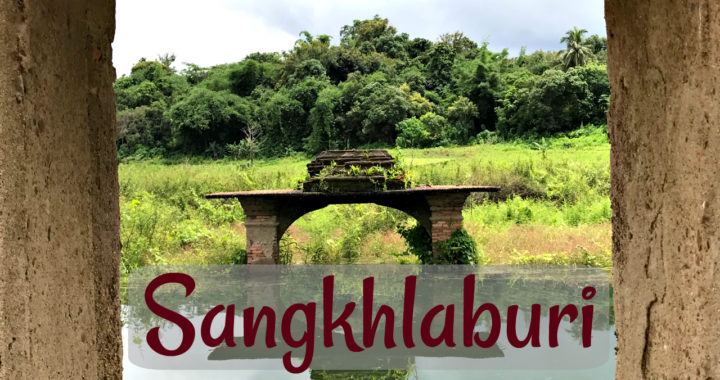Sangkhlaburi – Never Heard of It!
We’d not heard of this rural village called Sangkhlaburi. It’s situated just a mere 24 km from the Three Pagoda boarder crossing to Myanmar and 225 km from Kanchanaburi. Its seclusion added to the mystique so we wanted to experience the adventure of roads less travelled.
It entailed a bumpy and windy 4 hour bus ride (non A/C) from where we were at Nam Tok. We got a lift from our homestay hosts to a bus stop on the main road of Nam Tok and waited for the next passing local bus to arrive. According to the timetable (joke) there should be one due on the half hour.
One duly came rambling down the road and I flagged it down to stop. It is at this moment that you really hope it is the right one and we weren’t going to end up some random village kilometres from our intended destination.
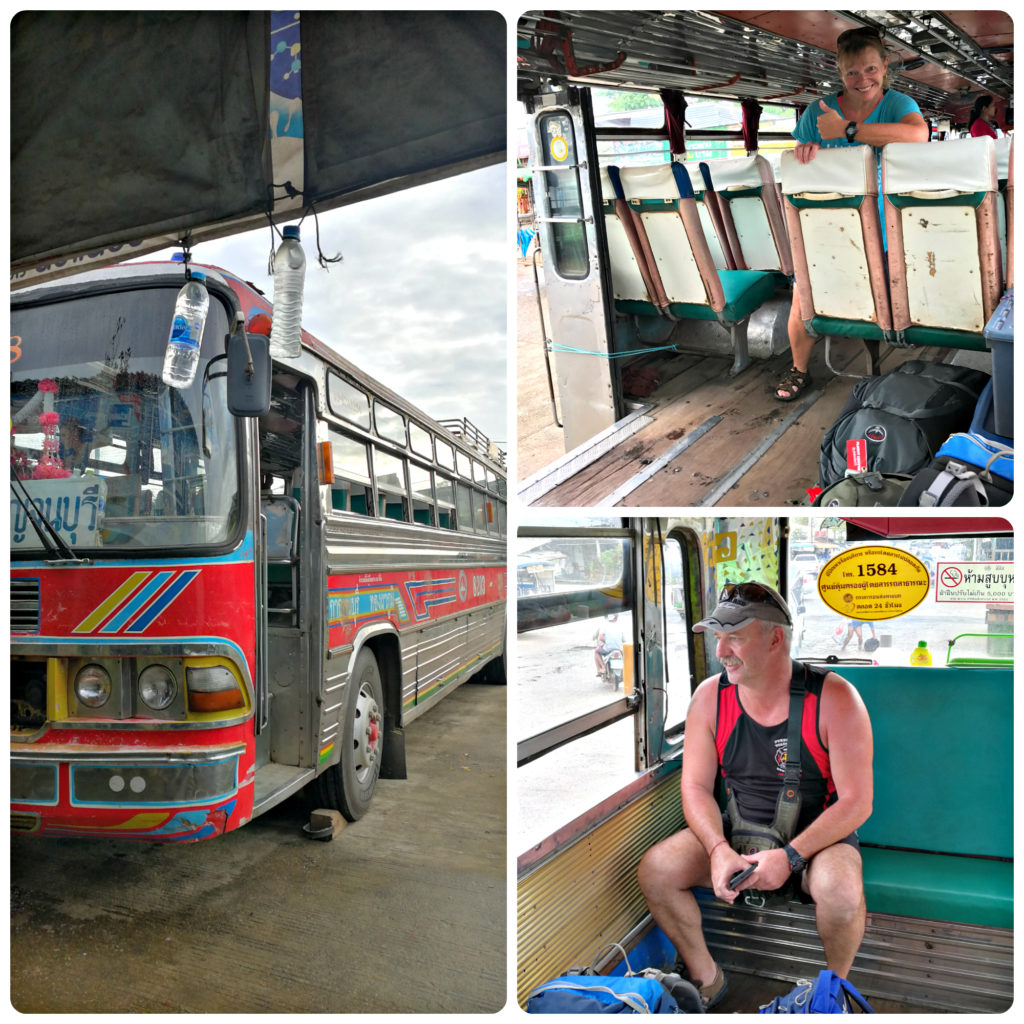
A very obliging ‘bus boy’ helped us with our packs and we parked ourselves on some seats. We were surrounded by produce and a bus full of locals going about their daily business. The windows opened for air flow and the seats were padded so what more could you ask for. We paid the princely sum of 260THB ($11NZ) for both of us.
Sangkhlaburi is situated towards the end of one of Thailand’s most spectacular roads. A road which calls on only the most experienced bus drivers to drive the route. The steep and curvaceous roads certainly would test the ability of any driver. Apart from some disconcerting moments when the driver would engage neutral on some of the steep downhill descents, I was trusting of our bus captain. Oh and the smell of the overheating motor on the long uphill slogs didn’t ease the tension either.
The Bus Boy also proved invaluable as he stood at the open back door (held open by a bungee cord) to make sure the produce (and our backpacks) didn’t fly out as we navigated the tight turns and twists.
The bus ambled along roads flagged by some dense jungles and passed through tiny Karen and Mon villages nestled between the foliage. There were a few stops periodically along the way to pick up and let off the locals – produce and all.
Winging it with Accommodation
Now we are usually the type to pre-book at least one night’s accommodation but looking at the prices on Booking.com, we decided to wing it and go in search of a room when we arrived.
Our scheduled arrival time was 1.30pm so this would at least give us some time to sort something out before nightfall. It can also be the case of being able to barter a good price if you are a ‘walk-in’.
We did have three options that we wanted to look at first so made our way to the first one. Well they didn’t really want to know us and I think that I might have been talking to the cleaner. He put me on the phone to the ‘boss’ who didn’t want negotiate any sort of deal and was very difficult to talk to with a language barrier not helping.
We carried on down the road with our packs in tow, towards option number two. We chatted to the ladies on the front desk and asked to look at the room after agreeing on a nightly fee of 600THB ($25nz).
The room consisted of a mattress on the the floor with a rather stained cover on the it, AC and a small bathroom and that was about it.
Not happy with that option either, we proceeded to walk even further down the road to our third option. After a lot of discussing over the phone and with desk staff, we agreed to a room rate of 700THB ($29nz) including breakfast.
We stayed 2 nights at the Chateau de Sangkhlaburi and as the name suggests, is very much based on a French theme. We were placed in one of their small rooms which I think may have been the Honeymoon Suite!
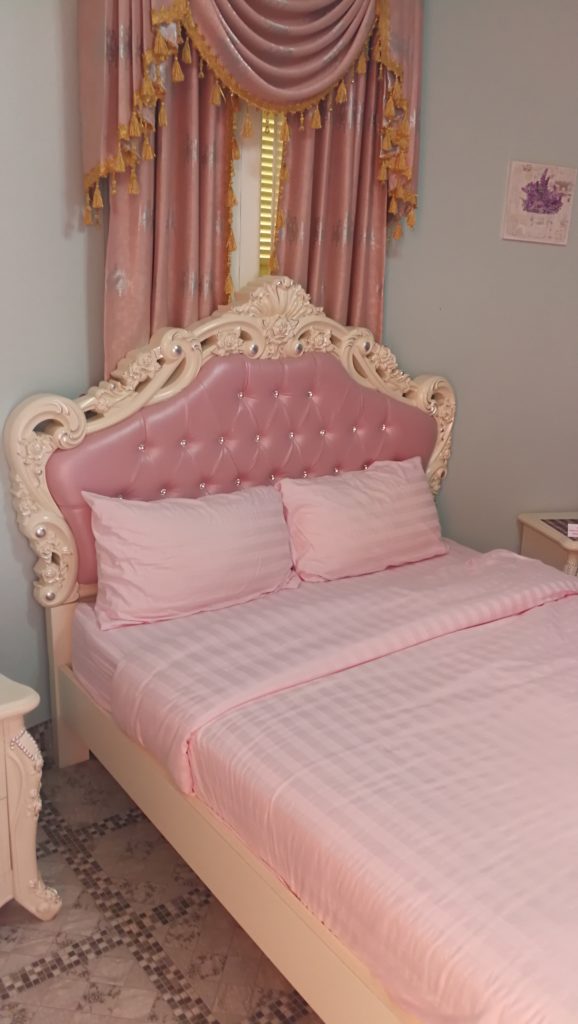
Our very pink room
So What’s the Attraction at Sangkhlaburi
Cruising along in our trusty bus we spotted Vajiralongkorn Lake (previously known as Khao Laem Lake). The lake is a reservoir that was created when a dam was built further to the south. The original Sangkhlaburi village was flooded in 1982 when the dam was completed – hence the reputation of the sunken village.
The village was relocated to the current location and sits opposite a Mon village called Monside. These two settlements are joined by a 450m long handmade wooden trestle bridge (2nd longest in the world).
Monside was founded by a Burmese monk called Luang Phor Uttama in 1949 after he fled Burma with 60 other Mon Families. He was instrumental in the building of the bridge to help unite the Mon and Thai people who lived on opposite sides of the water.
Uttama passed away in 2006 and since then the village has been in mourning. Alcohol is not permitted to be drunk in public and doing so would be hugely disrespectful. Uttama also still lies in state in the temple on the hill.
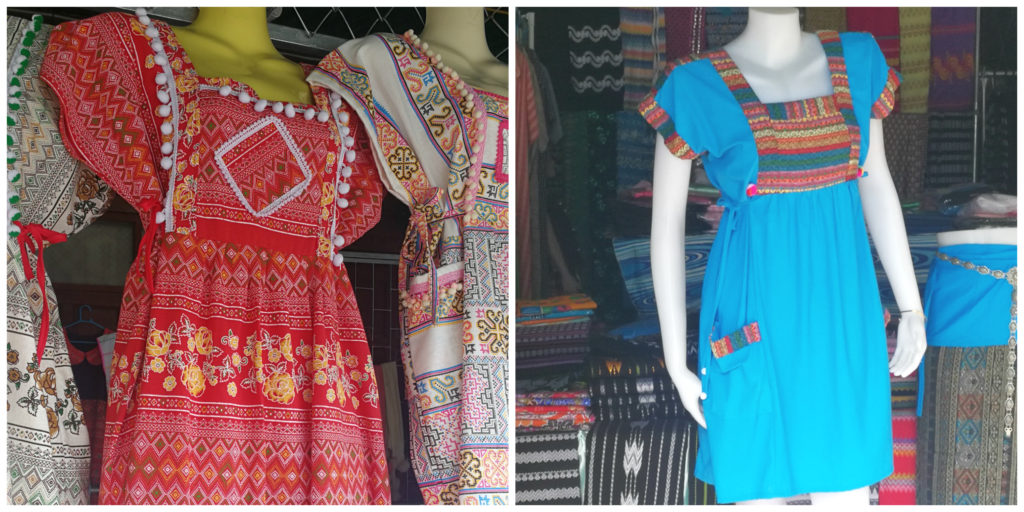
Lovely hand woven, brightly coloured dresses worn by the local women
Many of the villagers speak Mon as their first language and we could pick up the difference in not only dialect, but also in their looks, clothing and food.
The Bridge
The wooden bridge is the 2nd longest hand-made bridge in the world and Sangkhlaburi’s signature site.
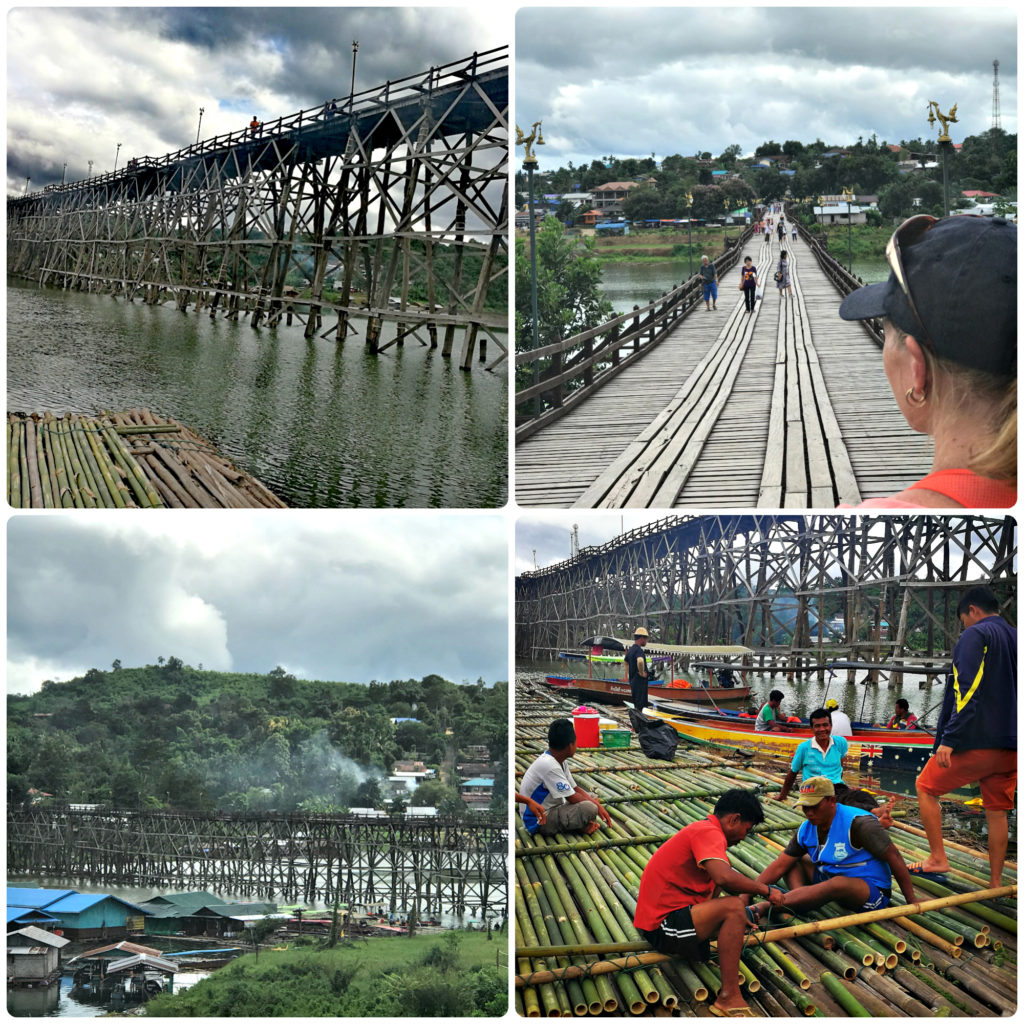
These days it is only a foot-bridge and all vehicle traffic must use the nearby concrete bridge. The bridge suffered a collapse in 2013 where a portion of it was swept away in floodwaters.
Although the bridge has been the site of clashes between Mon and Thai youth, every ethnicity joined forces to piece together a floating bamboo bridge in an incredibly short amount of time. This temporary bridge filled the gap between the villages until the original bridge could be repaired.
Wat Wang Wiwekaram and Chedi Buddhakhaya
We set off on foot and walked across the bridge into Monside. After approximately 3km we came to an impressive wat sitting proudly on the hill. Wat Wang Wiwekaram was built by the late monk Phara Uttama who I mentioned earlier.
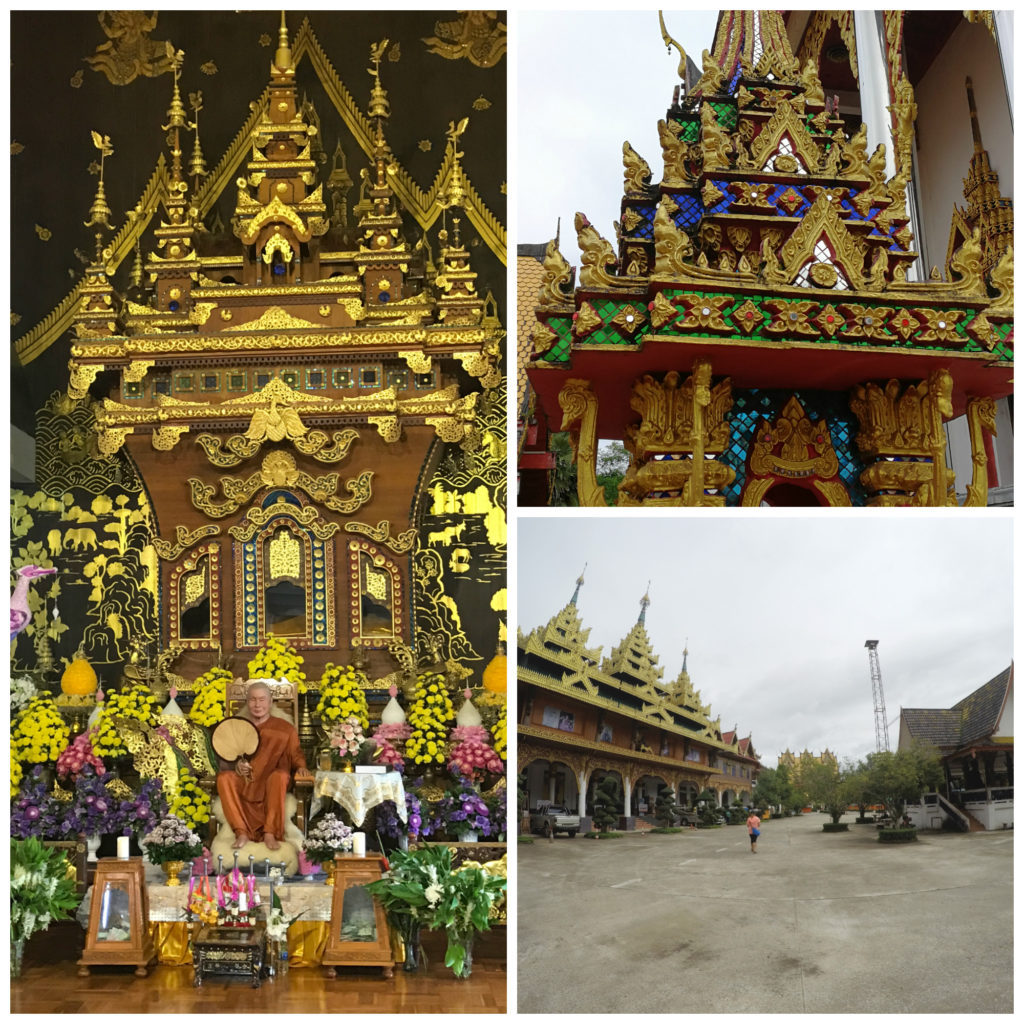
Monk Uttama still lies in state inside the temple he had built
There were many wat’s within the complex, all beautifully kept. It was quite serene and a tad eerie to view Uttama still laying in state.
We walked back down the hill and headed for Chedi Buddhakhaya.
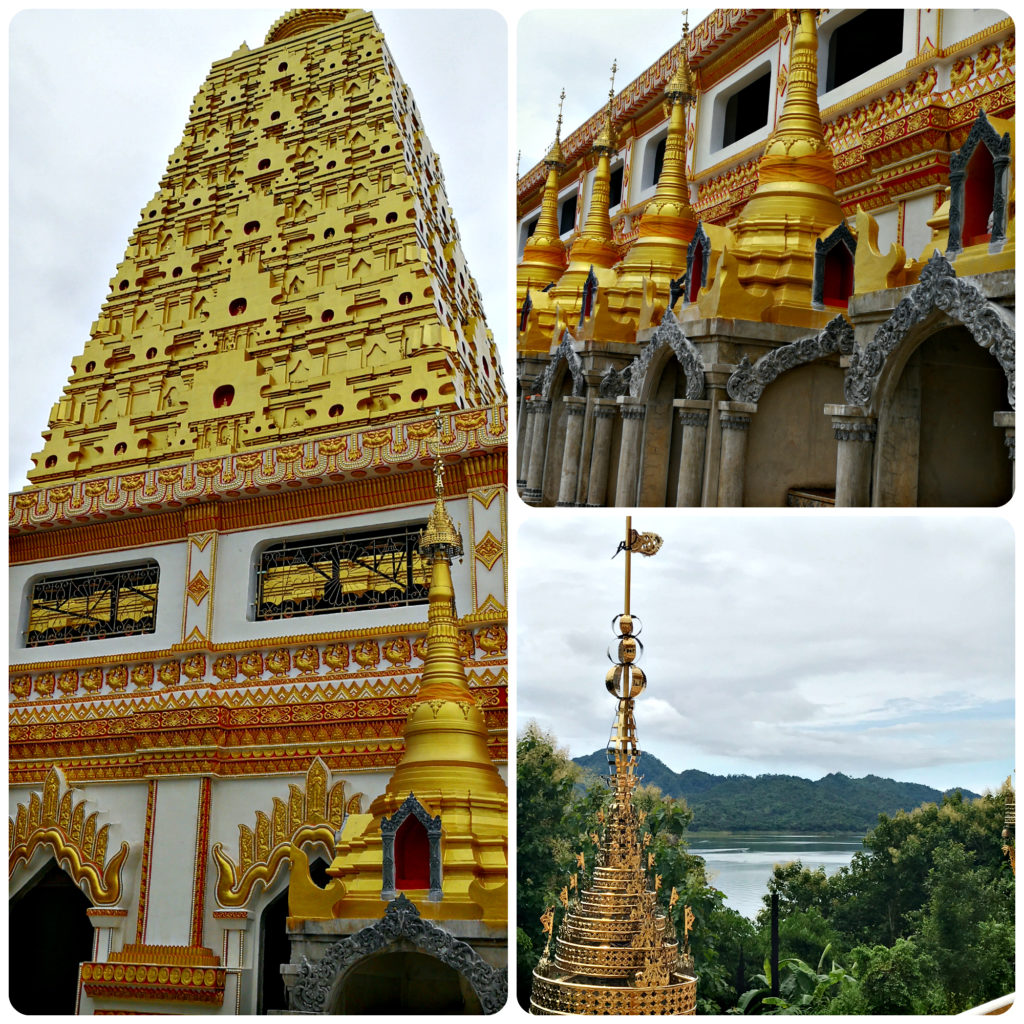
The Chedi stands out above the trees and can been seen from many places around Sangkhlaburi so we were keen to see it up close.
It was built in 1982 and looks vastly different from most other wats in Thailand. This is attributed to the fact that it was built to imitate an Indian stupa (Mahabodhi stupa of Bodhgaya) which marks the place of the Buddha’s enlightenment. It has hundreds of small metal Buddha images placed amid the tiled exterior.
Saam Prasob (The Sunken Temple)
We wanted to get out on the water and visit The Sunken Temple. The only way to do this was to engage the services of one of the many local boat owners who vie for business along the shoreline at the base of the wooden bridge.
We were fortunate to be visiting in the off peak season so after some bartering, we hired a private long tail boat from a toothless smiling local for the sum of 400THB ($17NZ).
We cruised south along the lake and it wasn’t long before the bell tower of Wat Samprasobe came into view. This bell tower is attached to the central village temple before the flooding of the original Sangkhlaburi.
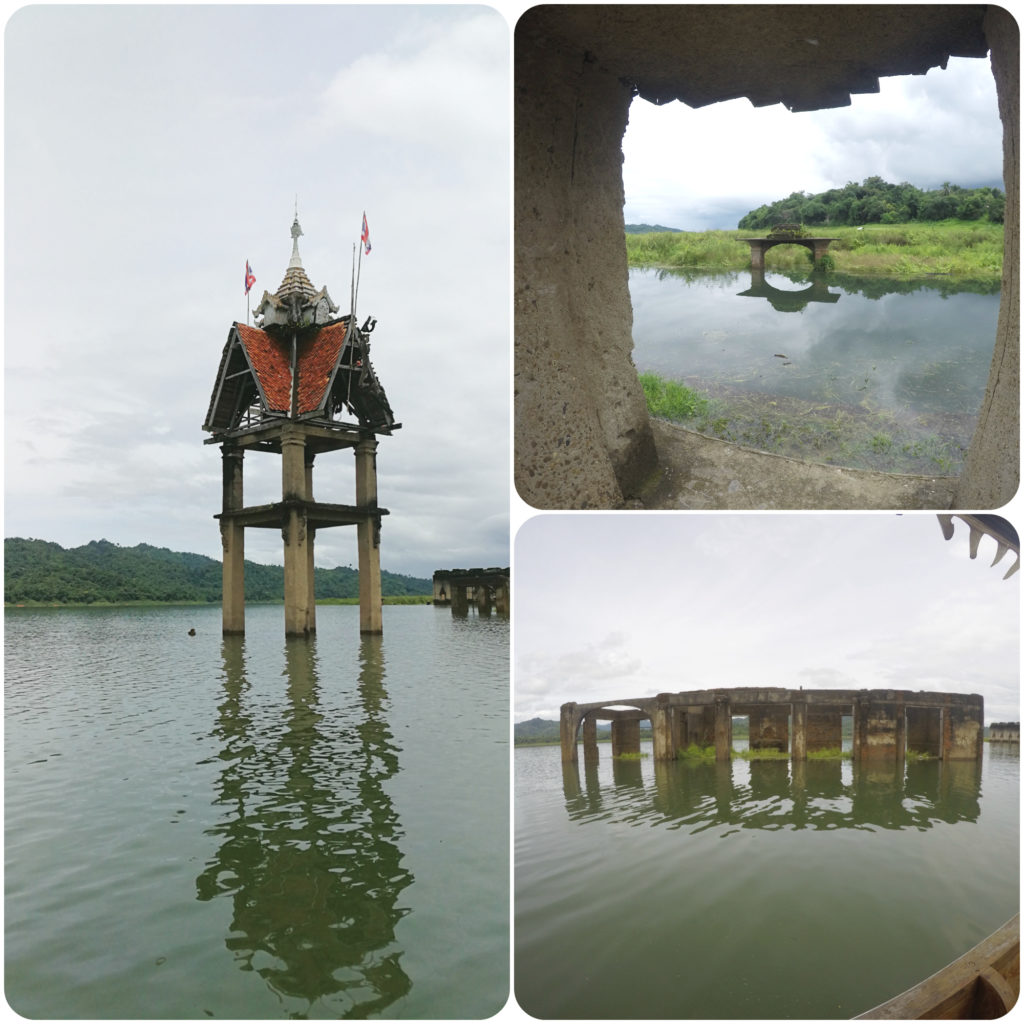
Along with the bell tower, with water lapping at the base of the walls was an ordination hall called Wat Saam Prasob. During the wet season, this hall can be completely submerged or at the least a couple of metres of bricks showing above water level.
Today, we were able to pull up in our long tail boat and disembark to wander around the area inside the hall.
Our third temple visit on our tour was situated high up on a hill so we could easily wander up the old brick stairs to have a look around the crumbling structure. Although it’s a shame that is left to mother nature, it makes for great photography.
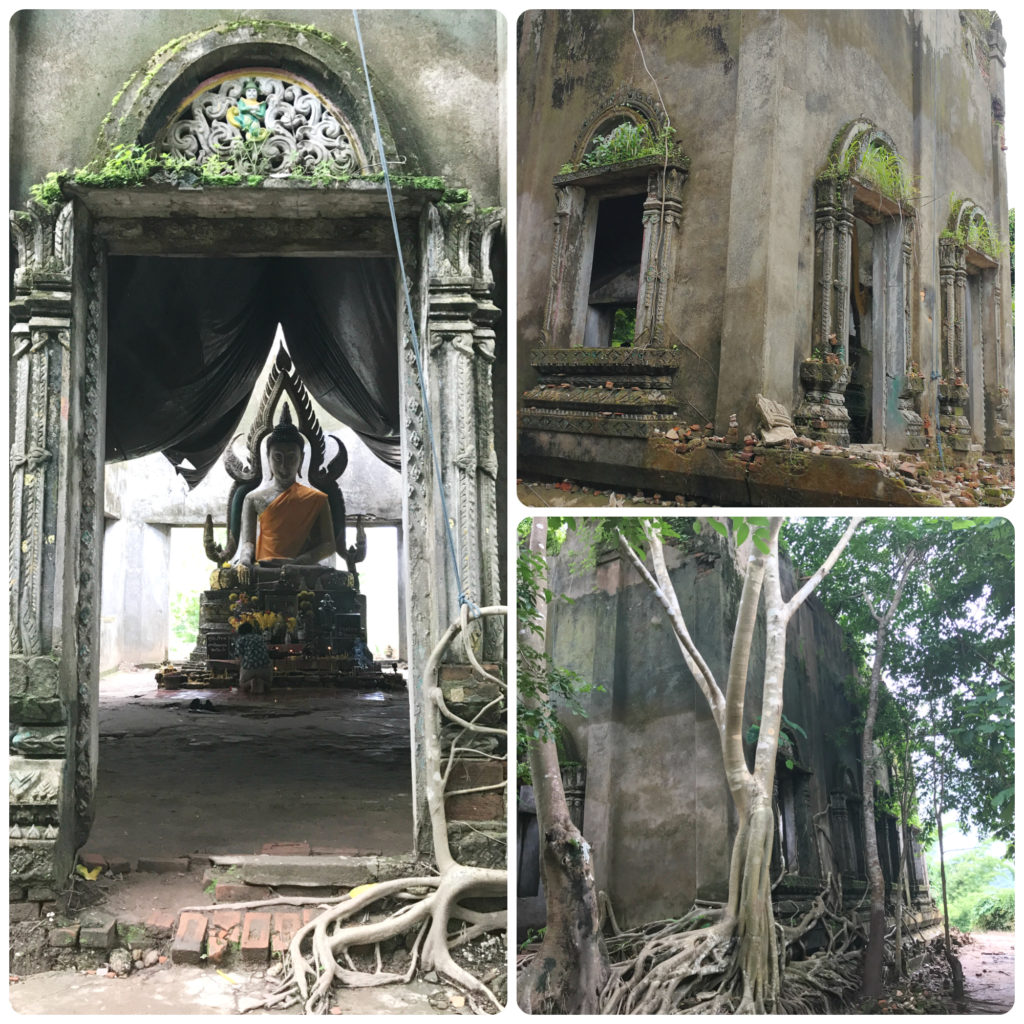
It was a strange feeling as the boat skimmed over the water, imagining what was beneath us. An entire village is lying in a watery grave complete with roads, trees, schools and houses. It must be an eerie sight if anyone manages to dive down into the murky waters.
We could see the skies starting to darken and some angry clouds were gathering. It was time to hightail it back to the wharf but our race was in vain. The heavens opened up as we donned our trusty ponchos. It was a case of heads down and battle through the downpour. I think that this just added to the atmosphere while out there cruising the lake above the sunken village.
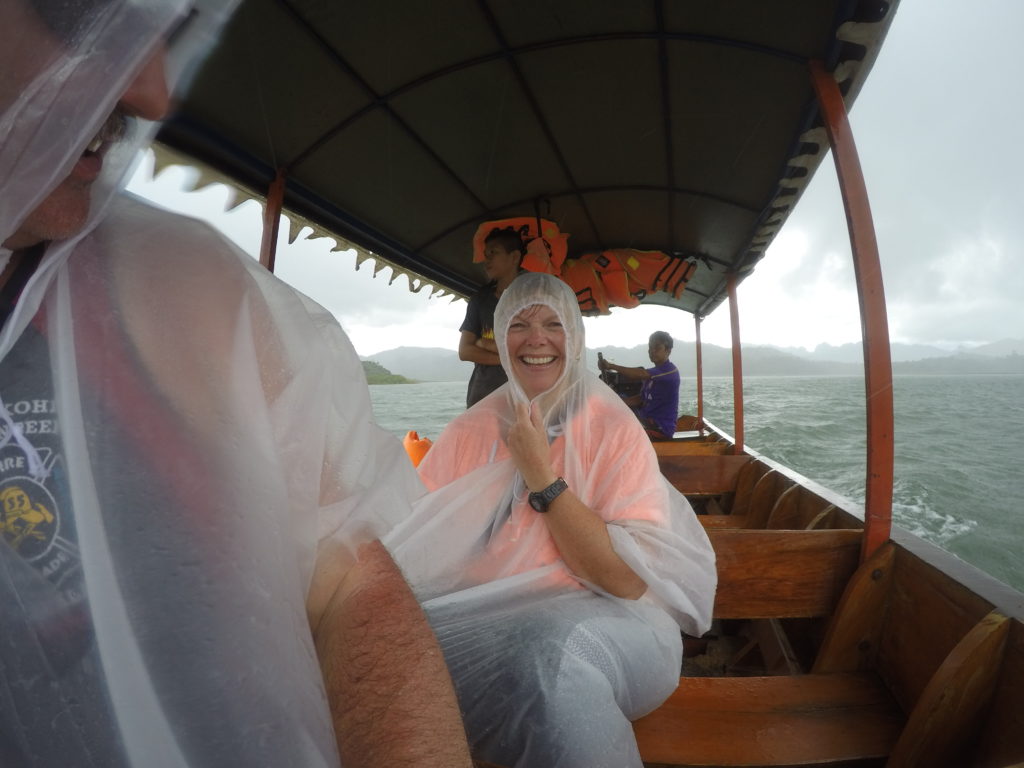
Click on the link below for a video on our highlights of our two night stay at Sangkhlaburi.
